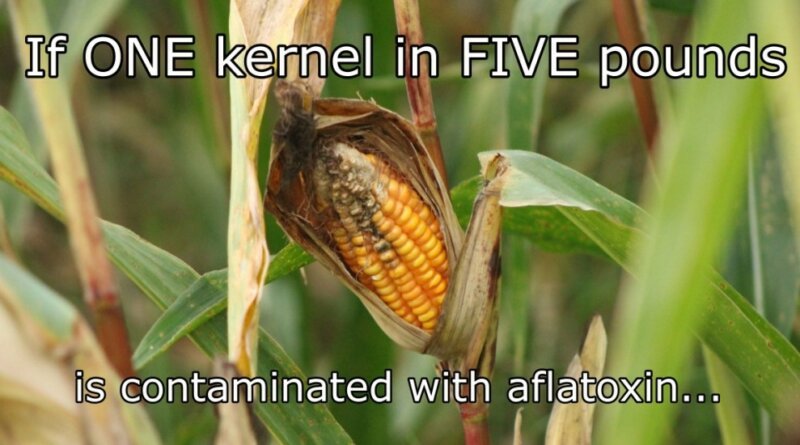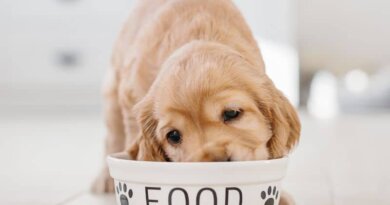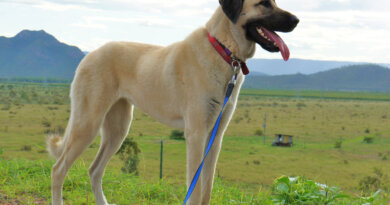9 Facts about Corn Ingredients in Pet Food – Truth about Pet Food
Corn doesn’t have to be a risk ingredient, but it CAN be. Facts you should know about corn ingredients before you trust your pet’s life with that pet food.
The short version – 5 Facts specific to mycotoxin risks of corn ingredients used in pet food is provided in the video below:
And the detailed version of corn ingredients in pet food is below, INCLUDING information for pet owners on how to protect your pet from risky corn ingredients.
#1 Corn is the most commonly used cat and dog food ingredient.
According to the Institute for Feed Education and Research corn is used in pet food more than any other ingredient; 700,000 tons more corn is used in pet food than any other ingredient.
#2 The corn used in pet food is field corn.
The corn used in pet food is not ‘corn on the cob’ type corn (sweet corn), the variety of corn in pet food is field corn. Field corn is harvested after the kernels are dry and is mainly used for animal feed (from cattle feed to pet food), but it is also used to make human foods such as tortilla chips, taco shells and corn meal.
#3 Corn is quality graded by the USDA.
The United States Department of Agriculture (USDA) has a grading system for corn, lowest grade number (U.S. No. 1) equals the highest quality. The highest quality corn has the least percentage of broken and damaged kernels and this is significantly important to the safety of the corn ingredient.

#4 All grades of corn are acceptable for use in pet food.
All of the grades of corn – including Sample Grade that can contain 0.1% of stones, 2 or more pieces of glass, 4 or more particles of a commonly recognized toxic substance, 0.20% animal filth, has a musty smell and/or is distinctly low quality – are allowed in pet food.
Because of the increased risk of mycotoxins/aflatoxin with inferior grades of corn (see #6 below), human food includes only the highest quality corn; mostly No. 1, but some No. 2. Human foods cannot contain any aflatoxins (a zero tolerance), but pet foods are allowed to contain 20 ppb aflatoxin (See Table 1 Here). Most of the highest quality corn goes to human food, leaving the inferior grades that are more susceptible to mycotoxin producing mold (due to higher percentage of damaged kernels) to animal feed and pet food.
#5 Pet food labels are not required to disclose the grade of corn.
Pet food regulations do not require manufacturers to disclose the grade of corn used to make your pet’s food. Your pet’s food could contain the highest quality or the lowest quality corn without your knowledge.
#6 The risk of dangerous mycotoxins that could sicken or kill your pet increases with inferior grades of corn.
The risk of mold producing mycotoxins increase with the increased amount of broken and damaged kernels (inferior grades of corn are allowed to contain higher percentages of broken and damaged kernels). Iowa State University Extension and Outreach services states “Mold and mycotoxin issues tend to be worse on broken and damaged kernels and fines relative to sound, whole kernels.” University of Kentucky Cooperative Extension Service states “However, broken kernels are more susceptible to mold invasion and insect infestation and will not store as well as sound corn.”
From an educational document published by Iowa State University – “Aflatoxins in Corn”:
“Aflatoxins are a group of chemicals produced by certain mold fungi. These fungi, Aspergillus flavus and Aspergillus parasiticus, can be recognized by olive green or gray-green, respectively, on corn kernels, in the field or in storage. Although aflatoxins are not automatically produced whenever grain becomes moldy, the risk of aflatoxin contamination is greater in damaged, moldy corn than in corn with little mold. Aflatoxins are harmful or fatal to livestock (and pets) and are considered carcinogenic (cancer-causing) to animals and humans.”
#7 Surprisingly, all grades of corn contain identical crude protein (but that’s a problem).
Anyone would assume that damaged corn is nutritionally different than high quality corn (mold and mycotoxins aside), but the University of Kentucky Cooperative Extension Service tells us that digestible nutrients are almost identical in high quality corn and inferior damaged corn. “On a dry matter basis, there is very little reduction in feeding value of lower grade corn. According to the National Research Council, there is essentially no differences, on a dry matter basis, between U.S. No. 1 corn and U.S. No. 5 corn for percent crude protein (10.2 versus 10.2), percent digestible protein (7.6 versus 7.5) or percent TDN (91versus 91 ).” (TDN = total digestible nutrients.)
Because inferior grades of corn analyze almost identical protein percentages as high quality corn, pet food manufacturers can switch between grades of corn or combine grades of corn in different batches of pet food without altering their formulas. We have been told by numerous pet food manufacturing employees it is common in the industry for some batches of pet food to use No. 2 or 3 corn, while subsequent batches use No.5 which includes 15% damaged kernels increasing the risk mold producing mycotoxins.
#8 One kernel of aflatoxin contaminated corn in 5 pounds is TOO MUCH.
The “Aflatoxins in Corn” publication from Iowa State University provides the most concerning information about the potential risk of corn in pet food stating:
“The Food and Drug Administration (FDA) has established an “action level” of 20 ppb for aflatoxins in corn in interstate commerce. Even one highly contaminated kernel in a 5-lb sample could result in more than 20 ppb aflatoxin.”
Think about that…1 kernel of aflatoxin contaminated corn in 5 pounds of kernels could result in “more than” the maximum level allowed in pet food.
You can imagine how difficult it is for testing to find that one kernel of contaminated corn within 5 pounds of corn. Magnify the difficulty with the real life conditions of pet food manufacturing. Corn is frequently delivered to pet food manufacturers in railroad cars; each rail car holds 3,500 bushels of corn (approximately 196,000 pounds). Each bushel of corn contains approximately 85,000 kernels which translates into an estimated 300 million individual kernels of corn in a rail car.
Finding the individual aflatoxin contaminated kernels of corn within a rail car is challenging; proper testing of pet food corn ingredients is vital.
From Cooperatives-Extension.org: “Sampling is the most important step in determining aflatoxin levels. Contaminated kernels are usually not uniformly distributed in a load. This makes it possible for one sample to contain a probe-full from a hot spot while the next contains no contaminated kernels. Aflatoxin is also measured at extremely low levels: parts per billion. One part per billion is equivalent to one second in 32 years. A single kernel of contaminated corn can have an aflatoxin level of 50,000 ppb. Forty kernels of this level of contamination is enough to put the bushel above the 20 ppb FDA action level. The recommended sampling procedure for detecting aflatoxin in farm trucks or semi-loads is to take at least ten probe fulls and collect at least 10 lbs. of corn.”
Unfortunately we’ve learned by attending AAFCO (pet food regulatory) meetings, testing “at least 10 pounds of corn” rarely happens. State Department of Agriculture representatives have shared at AAFCO meetings they rarely receive the necessary 10 pounds of corn for testing. Typically these state regulatory laboratories receive “3.5 oz samples“; regulatory inspectors don’t provide the labs with proper samples potentially resulting in aflatoxin/mycotoxin contaminated pet food corn going unnoticed.
#9 Corn Gluten Meal and Corn Germ Meal could be of higher risk for aflatoxins.
A commonly used pet food/treat ingredient – corn gluten meal – and a less commonly used ingredient corn germ meal are by-products from distiller industries and can be of even greater risk for mycotoxins. Quoting the same Aflotoxins in Corn document linked above:
“Corn with aflatoxins can be used for ethanol production. Aflatoxins do not accumulate in the ethanol but will be concentrated in the distiller’s grains co-product. In wet-mill processing, aflatoxins concentrate in the gluten co-products. A rough estimate is that aflatoxin levels in feed co-products will be three times those in whole corn.”
What pet owners can do to protect their pets:
What our pets deserve – for their safety – is for every pet food manufacturer that includes any type of corn ingredient to test for mycotoxins. Every batch, no exception.
If your pet food or treat contains any type of corn ingredient, get the lot number from the bag or can and ask the company to:
- Provide you a copy of the mycotoxin test results for all corn ingredients included in the pet food (ingredients should be tested upon receipt by manufacturer) – ask for the results for each corn ingredient in your pet’s food (these results provide you assurances individual ingredients are safe);
- Provide you with the mycotoxin test results for this lot of pet food (these results provide you assurances your pet’s food is safe).
Do this for every new pet food bag or can you purchase.
Proper testing of ingredients and pet food/treats is vital. All pet owners deserve to be provided with evidence your pet’s food is free from deadly mycotoxins – ask for test results.
Wishing you and your pet(s) the best,
Susan Thixton
Pet Food Safety Advocate
Author Buyer Beware, Co-Author Dinner PAWsible
TruthaboutPetFood.com
Association for Truth in Pet Food

Become a member of our pet food consumer Association. Association for Truth in Pet Food is a stakeholder organization representing the voice of pet food consumers at AAFCO and with FDA. Your membership helps representatives attend meetings and voice consumer concerns with regulatory authorities. Click Here to learn more.
What’s in Your Pet’s Food?
Is your dog or cat eating risk ingredients? Chinese imports? Petsumer Report tells the ‘rest of the story’ on over 5,000 cat foods, dog foods, and pet treats. 30 Day Satisfaction Guarantee. Click Here to preview Petsumer Report. www.PetsumerReport.com
Find Healthy Pet Foods in Your Area Click Here

The 2021 List
Susan’s List of pet foods trusted to give her own pets. Click Here to learn more.




